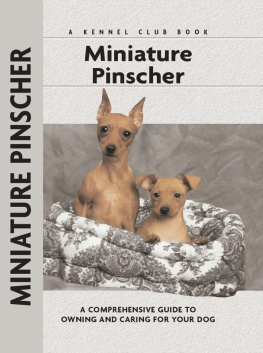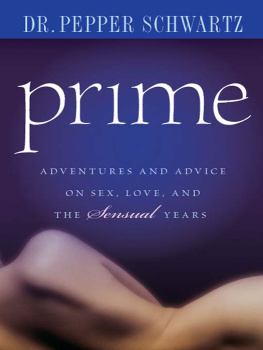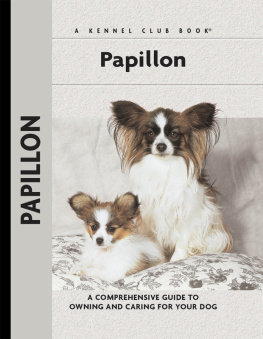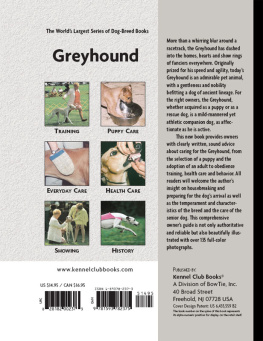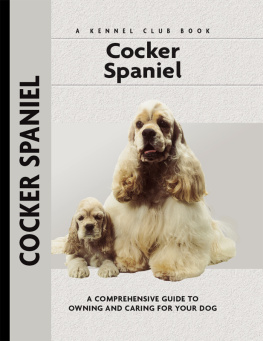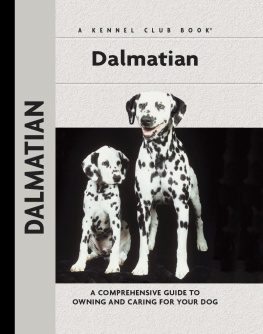
MEET THE MIN PIN
Its a narrow dirt footpath beside a country road. Bordering the walk-way is a tall row of hedges that separates pedestrians from the private property on the other side. Strolling down the path, you hear dogs barking behind the hedgerow. There are two dogs, small by the sound of their voices, but very determined in their warning alarm. Keep away is the loud and clear message.
You come to the corner and follow the footpath around the corner. The hedgerow now opens up to a lovely front yard with a gate and a flower-covered fence. You look beyond the front gate and see the source of the unrelenting barking: two Miniature Pinschers, one dark red and the other black-and-tan. They stand side-by-side, their Toy-dog bodies pulled up to present a fearless image, larger than the dogs themselves, as they warn you to stay off their property. Their proud and alert countenances make you forget their diminutive size.
Suddenly, amid the barking and displaying, the owner emerges from the house beyond the front yard. She speaks softly yet firmly to them. Quiet! Enough! The dogs look back at her and comply as they run to greet her. She bends down to praise them and then moves forward again. The dogs give one final bark as if to say, Well have the last word here! Again they race back to the gate.

Similar in appearance to the great German guard dog, the Doberman Pinscher, the Miniature Pinscher did not originate from the Doberman and is actually the more ancient of the two breeds.
As you chat with the dogs owner, you watch as their behavior turns from that of fearless guard dogs to that of happy house pets, clowning around at their owners feet. This is Bromley, says the owner, pointing to the black-and-tan dog. Shes named after the town where she was born. And my handsome red devil here is Midas. Hes the leader of the pack.
A brief neighborly chat later, you bid the lady and her dogs farewell and continue your walk. As you stroll along the country road, you think about Bromley and Midas. You admire their obvious and complete sense of self. You also like the love and respect they show their owner. Finally, you like the way they look. You start to suspect that the Min Pin, as the breed is affectionately called, might be the perfect breed of dog for you, too. Youve been contemplating buying a dog for some time. Now, considering your lifestyle, the Miniature Pinscher appears to be just what youve been seeking in a companion.
Doing your homework and researching the breed now becomes a priority. You are anxious to learn more about this plucky little dog who thinks hes a giant. Maybe, before long, youll have a Min Pin in your own home!
ORIGIN OF THE BREED
The Miniature Pinscher originated on German farms in the 1700s. They were bred to be ratters and were probably developed by crossing Dachshunds and Italian Greyhounds, with the addition of some terrier blood. Contrary to common belief, the Miniature Pinscher does not originate from the Doberman Pinscher, a large look-alike breed that did not evolve until a century later. In fact, the only similarity between Dobermans and Min Pins is the fact that they both claim terriers among their ancestors.
Originally, the Miniature Pinscher was called the Reh Pinscher, a name that referred to a small red deer that roamed the German forests. Until the late 1800s, the breed was produced without much regard to standardization. As long as the dog was small and could be an effective rat hunter, it was acceptable as a Reh Pinscher.
In 1895, the Pinscher Klub, now known as the Pinscher Schnauzer Klub, emerged as the inspiration for the breed. Standards of perfection were set, correct temperament was spelled out in detail and colors were defined clearly. This marked the formal beginning of this unique little breed. It was at this time that the official classification of Toy dog was designated. Today, Min Pins are often referred to as the King of Toys.
Naturally erect ears were a must for the breed in Germany, whereas in America cropped ears were (and still are) permitted as well. Docked tails were called for and coats were to be short and smooth, and were to lie close to the skin. Coat colors were defined as red, stag red (red mingled with black hairs), black and rust or chocolate and rust.
CROPPED EARS
In the United States, the Miniature Pinschers ears may be cropped or natural, but must stand erect. Cropped ears, shown here, are prohibited in Australia and Africa as well as in the UK. Cropping Miniature Pinscher ears in Great Britain was outlawed at the beginning of the 20th century.

WHAT IS EAR CROPPING?
Ear cropping consists of surgically trimming the ear leathers and then training the ears to stand upright. Originally, cropping was done to prevent the ears from being bitten by any adversary. With fighting dogs and terriers, cropped ears gave the opponent less to hang on to. Ear cropping also was considered important for cosmetic purposes, as it gives the dog a very smart look. Today the tradition of cropping ears has been banned in some countries; in these countries, dogs of any breed with cropped ears cannot be shown. Dogs can be shown in the United States with either cropped or uncropped ears, but certain breeds are rarely seen in the ring with uncropped ears. Erect ears are a must in the Miniature Pinscher; in the US, they can be either cropped or natural.

The Min Pin was defined as a proud, vigorous little dog with a hackneyed gait and a fearless presence. He must be alert and graceful, with an unshakable devotion to his master. In addition, he must display speed and courage. In other words, hes a dog with an attitude and he lets the whole world know it!
These standards of perfection have changed little from those early days. They remain the guiding blueprints for the breed around the world.
FROM SCANDINAVIA TO THE REST OF THE WORLD
The breeds first appearance beyond its land of origin was in the Scandinavian countries. Even today it is a favorite breed in Denmark. From that region, it spread throughout Europe (it is still a favorite today in the Netherlands and Italy) and into the British Isles, where people embraced its vibrant personality and great intelligence, as well as its ease of care.
From 1905 to the beginning of World War I, the Miniature Pinscher grew rapidly in popularity as more and more people became aware of the breeds desirable characteristics. During the war, however, breeding and the refinement of breed traits came to a halt. Then, in about 1915, interest in the breed renewed and serious breeding resumed.
Shortly thereafter, German immigrants brought Miniature Pinschers with them to the United States. It is thought that the breed first arrived here around 1919, with the first representative of the breed being registered with the American Kennel Club (AKC) in 1925. The breed was first shown in the AKCs Miscellaneous Class, although numbers in the early years were small. At that time, the breed was registered as the Pinscher (Toy).
Then, in 1929, the Miniature Pinscher Club of America was formed with the aim of getting the breed officially recognized in the Toy Group. The breed first was moved to the Terrier Group and shown there, but by 1930 the club had achieved its goal and the breed earned classification as a member of the Toy Group, with the name Pinscher (Miniature). It kept this name until 1972, when it was changed to Miniature Pinscher, the name by which we know these dogs today.
Next page
